This past Sunday, I went out to the Highpoint neighborhood in West Seattle to attend the Green Living Expo.
Highpoint is extraordinary (check out this map of the master plan). When it’s completed (about a third is finished at this point), it will be the largest interurban redevelopment in the country. I won’t get into all the details — check out the website — but here’s the short summary:
The community will be mixed-use, mixed-income, and mixed-ethnicity. They’re connecting up the streets with the surrounding grid. All the sidewalks (and one test street) are made of permeable concrete that allows rainwater through. They’re reserving fully half of the (eventually) 1,600 housing units for low-income buyers and renters. They’ve developed a massive, award-winning drainage plan based on bioswales, to naturally clean water as it drains into the neighborhood’s stream and pond. The housing units are all built to Energy Star and Built Green standards. Housing styles and colors are purposefully diverse. Walkways connect pocket parks, green space, and community gardens throughout.
This was all done with intensive community involvement. It’s really a remarkable achievement.
Anyway, I took a bunch of pictures — on, I should caveat, a very cloudy day — some of which are below the fold.
A large organic garden feeds residents; eventually there will be smaller “pea patch” community gardens throughout:
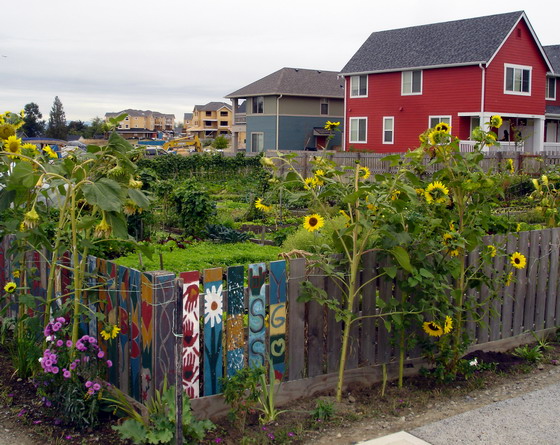
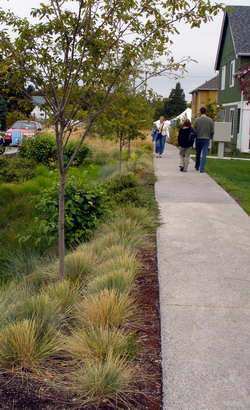 These are the bioswales that run along every sidewalk. I took a tour with one of the planners, and he said they had to fight the city to get narrower streets in order the accommodate the swales. Apparently firefighters were worried they wouldn’t be able to get through (they can).
These are the bioswales that run along every sidewalk. I took a tour with one of the planners, and he said they had to fight the city to get narrower streets in order the accommodate the swales. Apparently firefighters were worried they wouldn’t be able to get through (they can).
Note that this sidewalk, like all of them, is permeable.
Here’s the pond into which the swales drain. I was told in a heavy rain the water can come all the way up to the surrounding sidewalk.
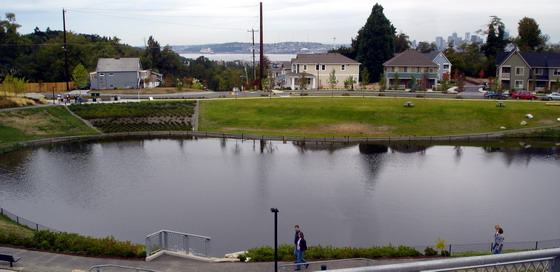
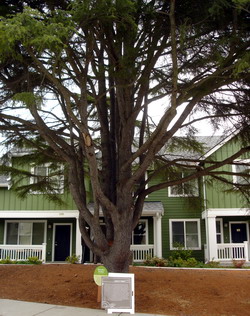
Before construction began, an arborist examined the entire site and assessed the value of the older trees. Some 150 old trees were preserved, sometimes at great effort and expense. Each one had a sign at the base describing what kind of tree it is and how much it’s worth. As the planner pointed out, the presence of old trees makes the whole place seem a little less new and a little more rooted.
Another measure taken to prevent that creepy look new developments tend to have these days is that builders were required to create plans with multiple colors and styles.
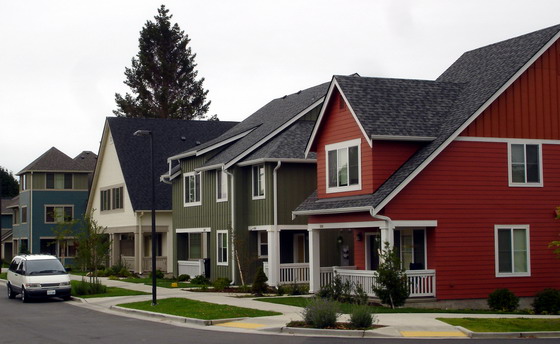
There is green space throughout the development, some big parks and then a bunch of these little “pocket parks.” Those units by the park are low-income rental units. Can you imagine?
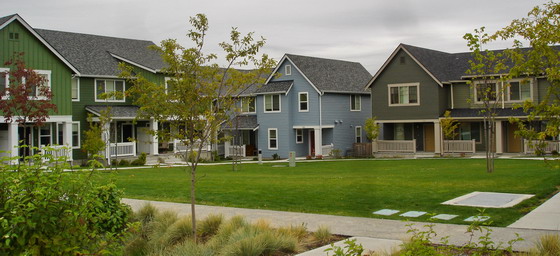
Finally, the planner I toured with said something interesting toward the very end when there were only a few of us left. Keep in mind that this guy is an environmental engineer, planner, and architect. Paraphrasing: “Yeah, Highpoint is green, but I don’t really care about that. Everything is going green these days; it has to; it’s inevitable. What I care about is the fact that Highpoint shows that you can have 50% low-income housing and still have a desirable neighborhood with high home values.”
He kind of has a point. Environmental concerns do seem to be taking off, which is more than can be said about social justice concerns. Food for thought.
Anyway, if you make it out to Seattle, visit Highpoint. It’s something to see.
